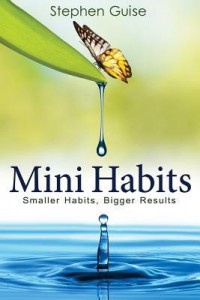Alright, so my plan to read and and get book reviews ready to go for 2016 kinda fell with a thud when I didn’t post anything last Tuesday. However, I have read two books, so let’s do a capsule review for both.
But! I also want to mention that last week I was interviewed by Jonah Sutton-Morse of the Cabbages and Kings podcast about my book reviewing habits and my reading goals for 2016. Wanna hear me talk about diversity, SFF, and Watership Down? Have a listen!
A Hat Full of Sky by Terry Pratchett
 I came to Pratchett very late in his career — the first book of his I read was Good Omens about a decade ago, but I didn’t start delving into Discworld until about three years ago. Since then, I’ve read only a few Discworld books, but I loved The Wee Free Men when I read it last year. My husband, who is very wise, bought me the last three Tiffany Aching books for Christmas, so I decided to prepare by reading A Hat Full of Sky.
I came to Pratchett very late in his career — the first book of his I read was Good Omens about a decade ago, but I didn’t start delving into Discworld until about three years ago. Since then, I’ve read only a few Discworld books, but I loved The Wee Free Men when I read it last year. My husband, who is very wise, bought me the last three Tiffany Aching books for Christmas, so I decided to prepare by reading A Hat Full of Sky.
A Hat Full of Sky happens about two years after The Wee Free Men, when Tiffany Aching rescued her brother from the Queen of Fairyland. Now, she’s been officially apprenticed as a witch to Miss Level, a caring but eccentric older witch. But when Tiffany uses a particular magical skill without understanding its rarity or its full import, her body gets taken over by a ravenous collective consciousness called a “hiver”. Tiffany, trapped within her own body, must find a way to regain control. Luckily, the Nac Mac Feegle and Granny Weatherwax are there to help.
I found the climax of A Hat Full of Sky to be very similar to its predecessor — Tiffany overcomes the antagonist of each book by tapping in to her witchy powers and “opening her eyes” twice to figure out its true weaknesses and desires. Both books also had a very cosmic quality to them — in The Wee Free Men, she became an incarnation of her homeland in order to cast an invader out to the alternate world where they came from, while in A Hat Full of Sky, she gave the hiver the ability to die by opening a doorway into the realm of death, something it didn’t know how to access on its own. In both instances, Tiffany ends the book by feeling empowered but also more aware of just how much of her power resides in her sense of empathy and humanity.
One thing I’m hoping that the remaining Tiffany Aching books will expand upon is Tiffany’s tendency towards egotism, and how that tendency could get exacerbated as she goes through adolescence. The hiver is a creature of untrammelled id, and its possession of Tiffany is a way for Pratchett to look at things like peer pressure, but I think there’s a lot more territory to explore here.
Mini Habits: Smaller Habits, Bigger Results by Stephen Guise
 Ah, and now we come to the obligatory It’s-New-Years-Which-Means-It’s-Time-To-Read-A-Self-Help-Book book. I found out about Mini Habits through a podcast by Ed Gandia, a popular online coach and mentor for freelancers. One of his podcast episodes talked about how it’s often productive for freelancers (like me) to switch from making goals to building habits. One of the resources he recommended towards making this shift was this very book.
Ah, and now we come to the obligatory It’s-New-Years-Which-Means-It’s-Time-To-Read-A-Self-Help-Book book. I found out about Mini Habits through a podcast by Ed Gandia, a popular online coach and mentor for freelancers. One of his podcast episodes talked about how it’s often productive for freelancers (like me) to switch from making goals to building habits. One of the resources he recommended towards making this shift was this very book.
I will agree that the premise of Guise’s book is sound: that to create long-term, durable habits, you need to start small. I also appreciate that the book contains several references to both current and past neurological research regarding willpower and habit formation.
However, like many self-help books, Guise’s prose is so full of hyperbole that I had a hard time finishing the darned thing. It doesn’t help that he spends a full chapter of Mini Habits talking about how depending on “willpower” and “motivation” to achieve goals will result in failure but he fails to define what he means by those two terms. To someone like me who doesn’t keep track of the latest neuroscience research, “willpower” and “motivation” sound synonymous, but Guise makes it clear that he considers these two concepts to be at odds with each other. A quick paragraph on what his personal definitions of those words are would have been helpful. This book could have easily been improved by shortening it even further from its already-short count of 127 pages.
